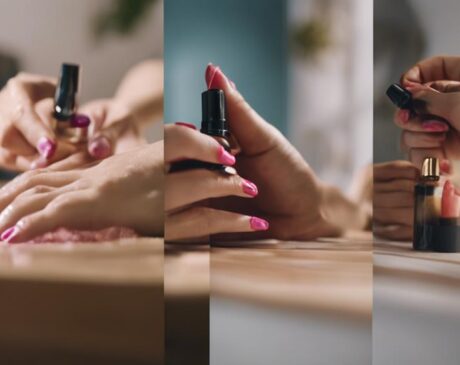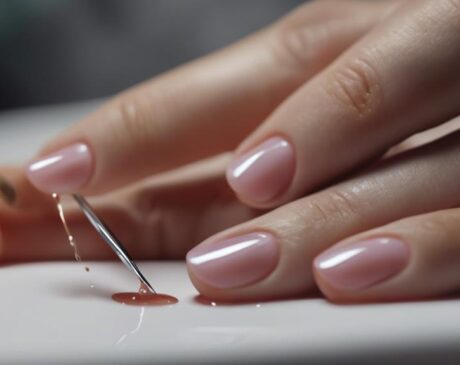Why Do Fake Nails Damage Your Nails?
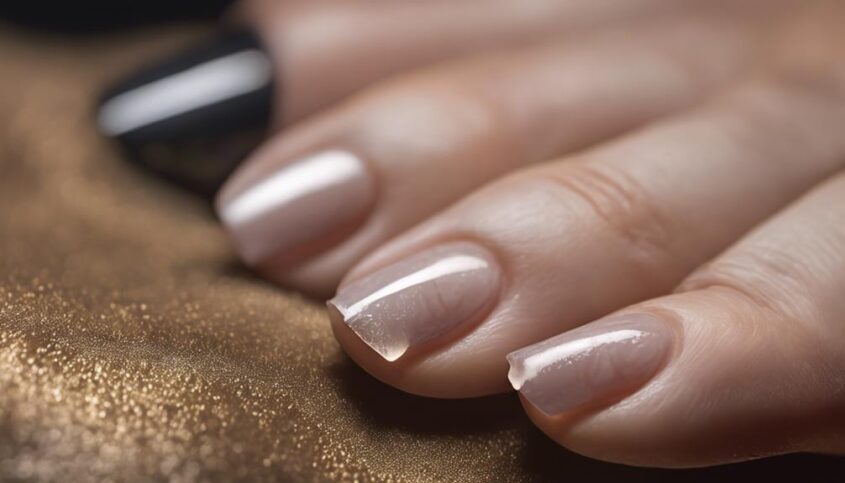
Fake nails damage your nails due to harmful chemicals like formaldehyde and excessive buffing, thinning, and weakening the nail structure. Trap of moisture, allergic reactions, weakness, and breakage are also factors. Proper removal techniques are crucial to prevent further damage.
Key Takeaways
- Chemical formulations with harmful ingredients weaken and damage the nail bed.
- Excessive buffing and filing can thin and weaken natural nails.
- Trapping moisture can soften the nail bed and lead to fungal infections.
- Allergic reactions to nail products can cause redness, swelling, and blistering.
- Improper removal techniques can damage the nail bed and weaken natural nails.
Chemical Formulations in Fake Nails
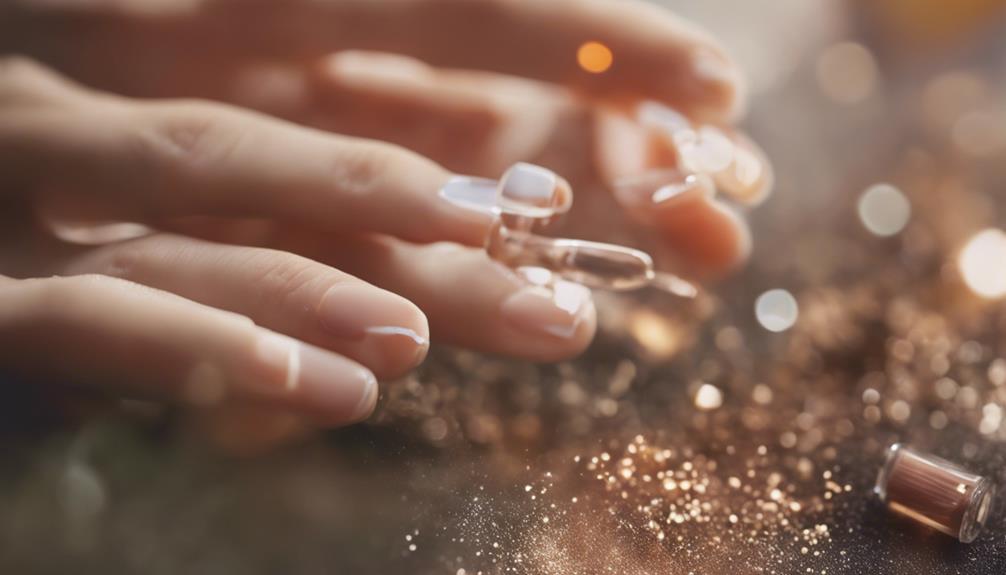
The chemical formulations used in fake nails can often contain harmful ingredients that contribute to the damage of natural nails. These formulations may include substances such as formaldehyde, toluene, and dibutyl phthalate, which are known to weaken the nail bed and cause brittleness. While these chemicals provide durability and flexibility to artificial nails, they can have adverse effects on the health of natural nails over time.
Innovations in the beauty industry have led to the development of healthier alternatives to traditional fake nail products. Many brands now offer non-toxic formulas that are free from harmful chemicals, providing a safer option for those who enjoy wearing fake nails. These new formulations prioritize nail health while still delivering the desired aesthetic results.
As consumers become more conscious of the ingredients used in beauty products, there is a growing demand for innovative solutions that prioritize both performance and safety. By choosing fake nails with healthier chemical formulations, individuals can enjoy the benefits of artificial nails without compromising the health of their natural nails.
Excessive Buffing and Filing
Excessive buffing and filing of natural nails during the application and removal of fake nails can lead to significant damage over time. This practice, often done to ensure a smooth surface for the fake nails to adhere to, can weaken the natural nail structure if not performed correctly. Here are four key points to consider when it comes to excessive buffing and filing:
- Thinning of the nails: Over-buffing or filing can remove layers of the nail plate, making it thinner and more prone to breakage.
- Damage to the nail bed: Aggressive buffing can damage the delicate nail bed, leading to pain, sensitivity, and potential infections.
- Weakening of the nails: Excessive filing weakens the nails, making them more susceptible to splitting, peeling, and overall deterioration.
- Impact on nail growth: Continuous buffing and filing can hinder the natural growth of nails, resulting in weaker, slower-growing nails over time.
To maintain healthy nails, it is essential to limit the amount of buffing and filing done during fake nail applications and removals.
Trapping of Moisture
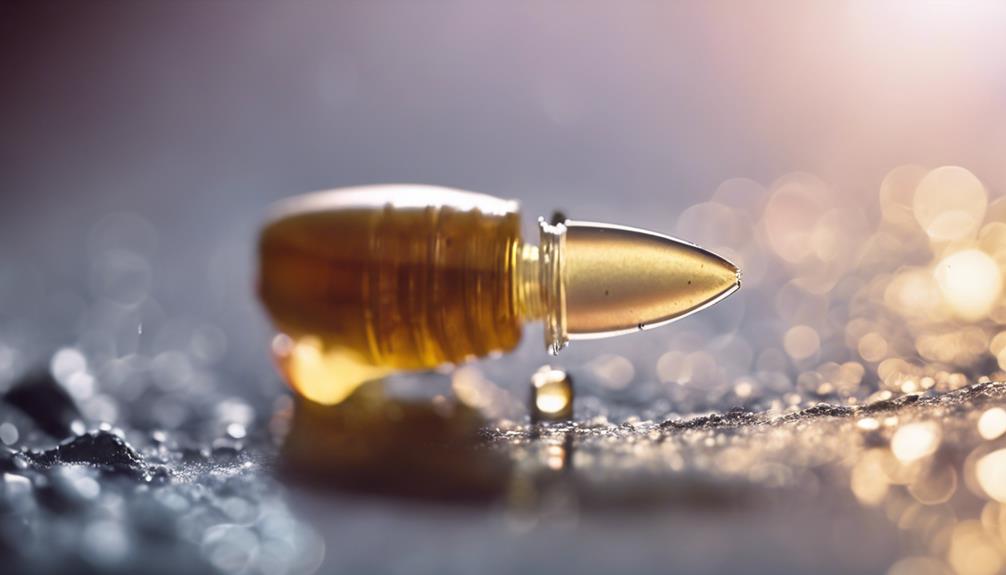
Trapping moisture under fake nails can lead to a moisture retention issue, potentially weakening the natural nail bed. Consistent exposure to moisture can increase the risk of fungal growth, creating an unhealthy environment for the nails. Understanding the consequences of trapped moisture is crucial in maintaining nail health when wearing fake nails.
Moisture Retention Issue
By wearing fake nails, individuals inadvertently create a conducive environment for moisture retention, which can have damaging effects on the natural nails. This moisture retention issue can lead to various nail problems, including:
- Softening of the nail bed
- Increased risk of fungal infections
- Peeling and flaking of the natural nails
- Weakening of the nail structure
Moisture trapped between the artificial and natural nails creates a breeding ground for bacteria and fungi, compromising the overall health of the nails. To prevent these issues, it's essential to allow the nails to breathe and maintain proper nail hygiene. Addressing the moisture retention problem is crucial in preserving the strength and integrity of the natural nails.
Nail Weakening Effect
The prolonged exposure to moisture trapped between fake and natural nails can contribute to the weakening of the nail structure over time, compromising their overall health and resilience. When moisture is trapped, it creates a perfect environment for bacteria and fungi to thrive, potentially leading to infections and weakening of the natural nail bed. This weakening effect is exacerbated by the continuous wear of fake nails, as the moisture becomes trapped and unable to evaporate naturally. As the nails weaken, they become more prone to breakage, bending, and overall damage. To counter this effect, it is essential to ensure proper drying and ventilation during the application and maintenance of fake nails to preserve the natural nail's strength and integrity.
Fungal Growth Risk
Moisture trapped between fake and natural nails creates an environment conducive to fungal growth, posing a risk to the health and integrity of the nails.
- Increased humidity levels promote fungal proliferation
- Lack of oxygen circulation exacerbates fungal development
- The warmth created between the layers aids in fungal colonization
- Use of non-breathable materials enhances fungal susceptibility
This trapped moisture not only weakens the nails but also provides an ideal breeding ground for various fungi. As innovation drives the beauty industry forward, it is crucial to consider the potential health implications of artificial nail applications. Awareness of the risks associated with fungal growth due to trapped moisture can help individuals make informed decisions about their nail care practices.
Allergic Reactions to Products
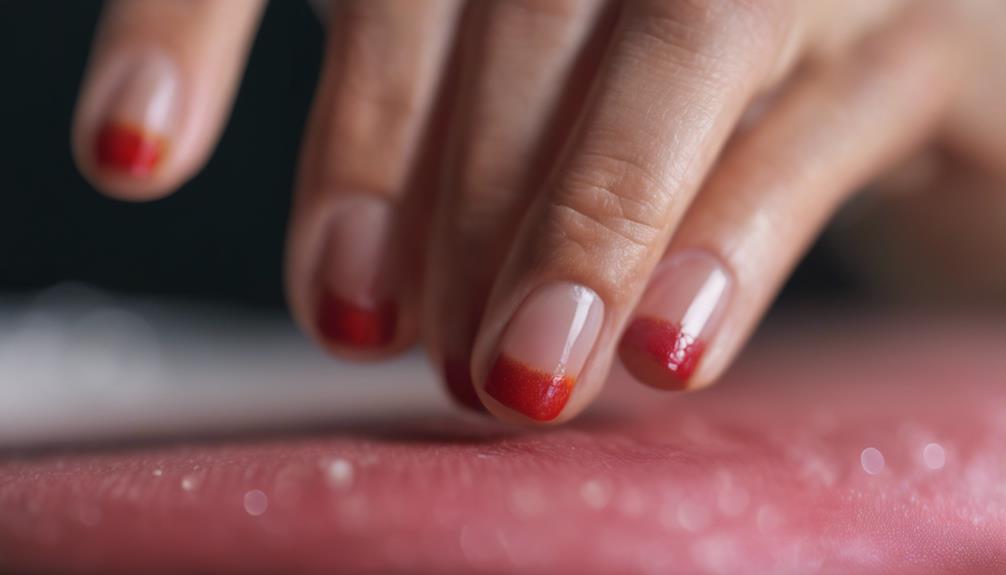
Understanding the potential for allergic reactions to nail products is crucial for maintaining nail health when using fake nails. Allergic reactions can occur due to the chemicals present in nail adhesives, polishes, and other products used in the application and maintenance of fake nails. Some individuals may experience redness, itching, swelling, or even blistering around the nail area as a result of these allergic reactions. These symptoms can not only be uncomfortable but can also lead to long-term damage if the allergen is not identified and avoided.
To prevent allergic reactions, it is essential to perform a patch test before using any new nail product. This involves applying a small amount of the product to a small area of skin and monitoring for any adverse reactions over 24-48 hours. Additionally, choosing hypoallergenic products or those labeled as "5-free" or "10-free" can help minimize the risk of allergic reactions. Being aware of potential allergens and taking proactive measures can help individuals enjoy the beauty of fake nails without compromising nail health.
Nail Weakness and Breakage
Nail weakness and breakage are common issues that many individuals face, often due to factors like excessive exposure to water or harsh chemicals. To combat these problems, incorporating habits like keeping nails well-trimmed and moisturized can significantly improve nail health. Understanding the causes of weakness and implementing preventive measures are key steps in maintaining strong and healthy nails.
Causes of Weakness
Weakness and breakage of nails can be attributed to a variety of factors beyond just external trauma or improper care. When it comes to nail health, several innovative factors play a role in weakening and causing breakage, such as:
- Nutritional Deficiencies: Inadequate intake of essential vitamins and minerals.
- Hydration Levels: Dehydration can lead to brittle nails that are prone to breakage.
- Chemical Exposure: Contact with harsh chemicals can weaken the nails over time.
- Health Conditions: Underlying health issues like thyroid disorders can impact nail strength.
Understanding these diverse factors is crucial in addressing nail weakness and breakage effectively.
Prevention Tips
To effectively prevent nail breakage and weakness, implementing proper hydration practices is essential. Keeping nails well-hydrated helps maintain their flexibility and strength, reducing the likelihood of breakage. In addition to hydration, adopting a balanced diet rich in vitamins and minerals that support nail health is crucial. Incorporating regular nail care routines, such as moisturizing cuticles and using protective coatings, can also help prevent weakness and breakage. Lastly, avoiding harsh chemicals and excessive use of nail enhancements can promote natural nail strength. By following these prevention tips, individuals can safeguard their nails against damage and maintain healthy, strong nails.
| Prevention Tips for Nail Weakness and Breakage | |||
|---|---|---|---|
| Proper Hydration | Balanced Diet | Regular Nail Care | Avoid Harsh Chemicals |
| Maintain nail flexibility and strength | Support nail health | Prevent weakness | Promote natural nails |
Improper Removal Techniques
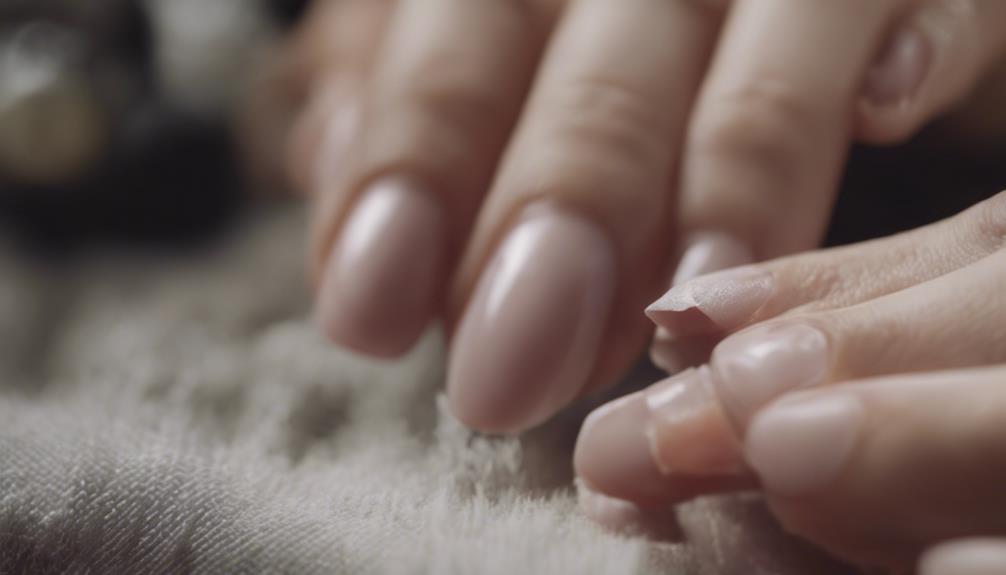
Improper removal techniques of fake nails can significantly damage the natural nail bed and surrounding tissues if not performed correctly. Improper removal can lead to thinning of the nail plate, weakening of the natural nails, and even infections. To prevent such issues, consider the following innovative techniques:
- Soaking Method: Use acetone or specialized nail polish removers to gently soak and dissolve the fake nails instead of forcefully pulling them off.
- Gentle Buffing: Opt for gentle buffing to remove any remaining residue after soaking, avoiding excessive pressure that could harm the nail bed.
- Moisturizing: Regularly moisturize the nails and cuticles post-removal to maintain their health and strength.
- Professional Removal: Seek professional help for the removal of fake nails, ensuring that the process is done safely and effectively.
Frequently Asked Questions
Are There Any Long-Term Effects of Wearing Fake Nails on the Natural Nail Bed?
Wearing fake nails may lead to potential long-term effects on the natural nail bed. It is crucial to consider the impact of prolonged use, ensuring proper care and maintenance to mitigate any adverse outcomes.
Can Fake Nails Cause Fungal Infections or Other Nail-Related Issues?
Fake nails can potentially lead to nail-related issues such as fungal infections due to moisture accumulation under the artificial nails. It is crucial to maintain proper nail hygiene and seek professional advice if any concerns arise.
How Can One Prevent Damage to Their Natural Nails While Wearing Fake Nails?
To prevent damage to natural nails while wearing fake nails, it is essential to ensure proper application and removal techniques. Regular maintenance, avoiding excessive force, and giving nails breaks between applications can help maintain nail health.
Are There Any Specific Vitamins or Supplements That Can Help Strengthen Nails After Wearing Fake Nails?
To strengthen nails post-fake nail wear, consider biotin, a vitamin renowned for its role in promoting nail health. Collagen supplements may also aid in fortifying nails. Always consult with a healthcare professional before starting any new supplement regimen.
Is There a Recommended Amount of Time to Take a Break From Wearing Fake Nails to Allow Natural Nails to Recover?
Taking periodic breaks from wearing fake nails is essential for natural nail recovery. Experts recommend allowing nails to breathe for at least 1-2 weeks between applications. This practice promotes nail health and reduces the risk of damage.


